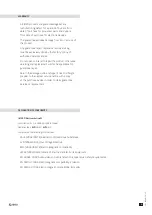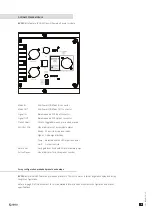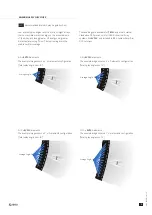
UM_EV
O88_EN_v3.1
8
8
SYSTEM CONFIGURATIONS
Introductory guidelines on Line-Array system configurations
Line-Arrays work because of the interactions of the different transducers in each array element. Some of
these interactions result in negative effects, such as distortion and phase issues, the benefits of energy
summing and a degree of vertical directivity control prevail as the advantages of using Line-Array systems.
The IDEA DSP Line-Array settings aim to facilitate a simplified approach to the Line- Array setup and
deployment and focus on two fundamental factors that affect the behavior of the array in terms of directivity
and frequency response linearity.
Array Length
The first factor is Array Length, which influences the range of frequencies in which the linearity of the
response of the array is affected by the total distance between the axis of all the transducers aligned in the
vertical plane.
This is specially noticeable in the LF, as the LF woofers, due to their proximity in relation the their band pass,
sum acoustic energy particularly efficiently, and require a compensation of the amplitude of the LF signal
from the crossover point with the subwoofers up to different frequency points depending on the number of
elements present in the array.
For this purpose the Settings are grouped in four Array lengths/Element counts: 4 -6, 6-8, 8-12 and 12-16.
Array Curvature
The second key element for the DSP setting of the Arrays is the curvature of the array. Many different
combination of angles can be set by the operators of a Line-Array, optimizing the desired vertical coverage
required for the application.
Users can use EASE FOCUS as a guide to find the ideal internal splay angles between array elements.
Note that the sum of the internal splay angles and the nominal vertical coverage angles of the array do not
correlate directly and their relation varies with the array length. (see examples)
IDEA DSP settings
IDEA DSP settings operate in 3 categories of averaged Array curvature:
MINIMUM
(<30° Recommended Internal Splay Angulation Sum)
MEDIUM
(30-60° Recommended Internal Splay Angulation Sum)
MAXIMUM
(>60° Recommended Internal Splay Angulation Sum)
EASE FOCUS Prediction Software
EVO
88-M Ease Focus GLL files are available for download from the product’s page as well as from the
Downloads repository section.



































